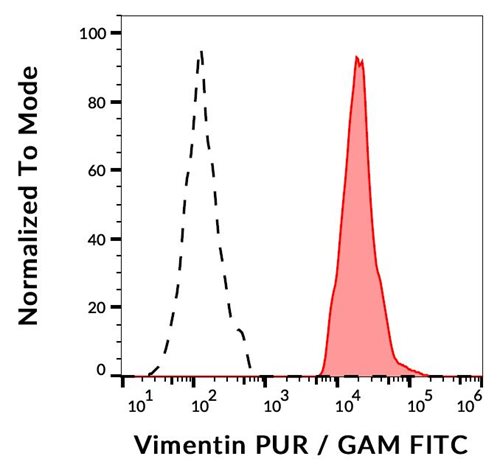Anti-Actin Monoclonal Antibody (Clone: AC-40)
Shipping Info:
For estimated delivery dates, please contact us at [email protected]
| Amount : | 100 μg/vial |
| Isotype : | Mouse IgG2a |
| Purification : | Ascites |
| Content : | Mouse ascites fluid, 1.2% sodium acetate, 2mg BSA, with 0.01mg NaN3 as preservative. Reconstitute : Add 1ml of PBS buffer will yield a concentration of 100ug/ml. |
| Storage condition : | At -20˚C for one year. After reconstitution, at 4˚C for one month. It can also be aliquotted and stored frozen at -20˚C for a longer time. Avoid repeated freezing and thawing. |
Actin, a highly conserved protein, is a major component of both the cytoskeletal and contractile structures in the cell types. It varies in amount, being related to the type of differentiation and to the functional state of cells and tissues. The actins exhibit over 90% sequence homology, but each isoform has a unique NH2-terminal sequence. The isoforms are comprised of three alpha-actin, one beta-actin, two gamma-actin. Because the amino acid sequence of the C-terminal is the same for almost all actins, this antibody has been raised using a synthetic peptide corresponding to the C-terminal 11 residues.
Immunohistochemistry(Frozen Section) : 4μg/ml
For Research Use Only. Not for use in diagnostic/therapeutics procedures.
| Subcellular location: | Cytoplasm |
| Post transnational modification: | (Microbial infection) Monomeric actin is cross-linked by V.cholerae toxins RtxA and VgrG1 in case of infection: bacterial toxins mediate the cross-link between Lys-52 of one monomer and Glu-272 of another actin monomer, resulting in formation of highly toxic actin oligomers that cause cell rounding (PubMed:19015515). The toxin can be highly efficient at very low concentrations by acting on formin homology family proteins: toxic actin oligomers bind with high affinity to formins and adversely affect both nucleation and elongation abilities of formins, causing their potent inhibition in both profilin-dependent and independent manners (PubMed:26228148). |
| BioGrid: | 106573. 145 interactions. |
|
There are currently no product reviews
|





















.png)










